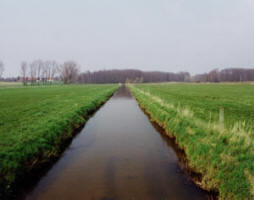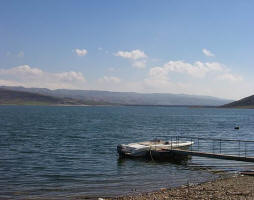 Earth Observation for Green Growth
Earth Observation for Green Growth
A report released by ESA & World Bank.
Earth Observation (EO) services can help assess disaster risk, study water resources, forecast manifestations of climate change, monitor the state of agricultural and natural resources, measure city growth, and carry out many other assessments. EO is increasingly used in sustainable development work and has become a valuable tool to help achieve the mission of the World Bank, which can obtain significant benefits from the stream of comprehensive geospatial information for more informed decision-making.
EO services can be undertaken at varying spatial scales, from local to global. They generate information in a non-intrusive, objective, and consistent manner, which in turn allows Bank teams and local stakeholders, among other things, to:
- establish projects’ baselines against which changes can be detected and mitigation measures can be determined,
- check the progress and impact of Bank projects,
- identify and address "hot spot" problems and regions in crisis, and
- support dialogue with local partners by putting development issues in a spatial context, in a reliable and unbiased manner.
It is important that the World Bank takes advantage of this potential and mainstreams the use of EO across regions and sectors, becoming a leader and innovator in understanding the best ways to use EO technologies within development work. This process has already begun with the World Bank harnessing a number of partnerships with specialized organizations to bring the benefits of Earth Observation-or remote sensing-to Bank operations.
Projects include: EOWorld, a collaboration between the World Bank and the European Space Agency (ESA) to mainstream the use of EO across the World Bank's Sustainable Development Network; the Memorandum of Understanding between the Japan Aerospace Exploration Agency (JAXA) and the World Bank for global environmental issues; and partnering with the National Aeronautics and Space Administration (NASA) and the National Oceanic and Atmospheric Administration (NOAA) in the water and agricultural sectors.
STRATEGY
Knowledge Management
Many Bank investment operations have developed a significant wealth of comprehensive EO-based information datasets. However, up until now, EO activities have occurred in relative isolation from one another. Increased collaboration and coordination will provide the catalyst for an increase in knowledge and data sharing across the Bank.
Capturing and organizing systematically these knowledge products is the first step to network different stakeholders working to address similar development challenges while avoiding duplication of efforts. Dissemination of geospatial knowledge involves not only sharing of knowledge, datasets and information and analytic tools but also best practices, experiences, and lessons learned.
This goal to mainstream data and knowledge products to the wide community of development practitioners is aligned with the World Bank's “Open Data, Open Knowledge, Open Solutions” policy reforms, aimed at making most of the information assembled or generated directly by the Bank available openly and publicly. To achieve this goal, two platforms have been created: the Earth Observation for Development website and the GeoWB data portal. These platforms act as a hub for all Earth Observation activities that are occurring within the Bank with the ability to increase coordination and foster collaboration and innovation by:
- exploring EO-based innovations in planning, implementation and management of World Bank investment projects,
- mainstreaming the latest developments in Earth Observation programs and services to help better address development challenges,
- proving a dedicated portal to store manage and share EO data,
- facilitating networking among internal and external stakeholders involved in the use of Earth Observation, and
- contributing to the review the strategic directions concerning the current and future World Bank approach toward the coordinated use of EO information technology and applications.
These platforms are key inputs to developing internal capacity concerning the management of geospatial datasets developed in the framework of Bank activities.
Learning and Capacity Building
The tools developed through Earth Observation for Development are dedicated to support evidence-based policy making by promoting the use of Earth Observation as a standard reference technology in monitoring development projects. The tools are broadening knowledge on the role of geospatial information in sustainable development, raising awareness about available EO programs and services, and supporting dedicated remote sensing capacity building activities targeting scientific and operational user communities in developing countries.
| Contact information | n/a |
|---|---|
| News type | Inbrief |
| File link |
http://esamultimedia.esa.int/multimedia/publications/EO_for_green_growth_complete/ |
| Source of information | ESA & World Bank |
| Keyword(s) | Earth Observation, Green Growth |
| Subject(s) | AGRICULTURE , HYDRAULICS - HYDROLOGY , INFORMATION - COMPUTER SCIENCES , MEASUREMENTS AND INSTRUMENTATION , METHTODOLOGY - STATISTICS - DECISION AID , NATURAL MEDIUM , POLICY-WATER POLICY AND WATER MANAGEMENT , PREVENTION AND NUISANCES POLLUTION , RISKS AND CLIMATOLOGY , TOOL TERMS , WATER DEMAND , WATER QUALITY |
| Relation | http://go.worldbank.org/NP62D7INF0 |
| Geographical coverage | n/a |
| News date | 23/10/2013 |
| Working language(s) | ENGLISH |
 you are not logged in
you are not logged in





